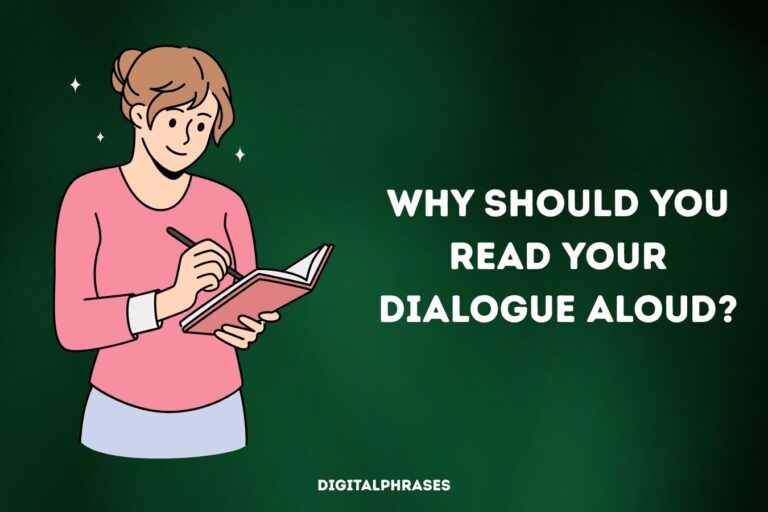How to Build an Fantasy World That Feels Real
If you’re reading this, you’ve probably built more worlds than some characters live long enough to see. You’ve mapped continents, balanced magic systems, maybe even invented a calendar or two. But still, sometimes, something’s… off. The world looks good on paper, but it doesn’t feel alive. It doesn’t breathe.
That’s what this piece is about—not making your fantasy world bigger, but making it realer.
And by “real,” I don’t mean grounded in modern physics or mimicking medieval Europe down to the tax codes. I mean a world that feels lived-in, emotionally coherent, and full of the kind of texture that sticks with readers long after they’ve closed the book.
The kind of place where you believe people were arguing over bread prices long before the Chosen One showed up.
This isn’t a how-to for beginners. I’m not going to explain what a magic system is or walk you through kingdom design. We’re going deeper—into philosophy, tone, mud, plumbing, memory, and myth. Into how people actually experience a world, not just how you construct it from above.
Let me guide you on how to build a world that could lie to us, surprise us, even grieve us.
Let’s build something that lives.
First, Set The Foundation
Here’s something I wish more fantasy worldbuilders talked about upfront: your world needs a worldview. Not just lore or maps, but a guiding philosophy—something that quietly shapes why the world is the way it is.
Think about Earthsea—Le Guin doesn’t just give us magic, she gives us a worldview rooted in balance, consequence, and language. That foundation informs everything, from how wizards train to why silence matters.
Or look at The Broken Earth trilogy—Jemisin’s entire world is filtered through generational trauma and survival under oppression. The tone isn’t just dark; it’s politically charged, with purpose.
When I start building a world, I ask myself, “What emotion should this world provoke in the people who live in it?”
Wonder?
Resentment?
Exhaustion?
That emotional core affects everything—how characters see gods, power, even hope.
Without this layer, worldbuilding becomes cosmetic. Pretty, but hollow.
And experts like us?
We’ve seen a thousand well-drawn maps.
But the ones that stick?
They’ve got meaning baked in. They’re saying something, even if it’s quiet. So yeah—before the castles and currencies—start with the soul of the thing.
The Six Pillars of a Realistic Fantasy World
Here’s the truth: your readers will believe in dragons if they believe in the plumbing.
Fantasy thrives when the fantastical sits right next to the familiar—when magic is happening in a world that has to deal with bad harvests, trade disputes, and social norms.
The mundane might not be flashy, but it’s what makes a world feel lived-in, not staged.
The trap a lot of experienced worldbuilders fall into is going big too fast—epic mythologies, ancient magic systems, multi-generational timelines.
But believability doesn’t come from scale. It comes from friction. From the parts of the world that rub up against each other in a way that makes sense. Let’s break down some of those essential mundane systems—the stuff that glues your fantasy world together.
Economics: What Do People Eat?
You’d be surprised how many fantasy worlds have lavish kingdoms and zero farms. If your characters eat, someone has to grow, raise, trade, or steal that food.
Is it seasonal?
Imported?
Sacred?
What does a feast mean in a desert culture that lives on dried roots and goat’s milk?
Think about Game of Thrones. The North’s food is practical and preserved—salted meats, root vegetables, ale. The South gets citrus, wine, and luxuries. That contrast tells you everything about climate, trade, and class.
Food isn’t just nourishment; it’s world-building.
Infrastructure: How Does Stuff Move?
Roads, rivers, shipping routes, postal systems, portals—how people and goods get from one place to another matters. Not just because it adds realism, but because it shapes culture.
Does your world have a silk road equivalent?
Are river towns wealthier because of trade?
How dangerous is travel?
Is it slow and painful, or is there a well-organized teleportation network—controlled by whom?
The Witcher series does this well. Villages feel isolated because roads are dangerous, and it affects how superstition festers. The lack of easy movement isn’t just logistical—it’s social, political, even religious.
Timekeeping: How Do People Mark the Days?
This one’s sneaky, but so effective. Calendars, festivals, lunar cycles—the way a culture tracks time reveals what it values. Do they count time by kings or by natural disasters? Do they celebrate solstices or harvests?
Let’s say your world has two moons. How would that affect agriculture or ritual?
Maybe each moon governs a different kind of magic, and people are born under certain celestial “signs” with real-world implications.
Timekeeping grounds your world in rhythm. Without it, events feel like they’re floating in a void.
Domestic Rituals: What Do People Do at Home?
We get so caught up in war councils and prophecies that we forget people live actual lives.
Birth, marriage, death, sex, sleep, boredom—how do people handle these things?
Are weddings arranged by caste or negotiated with dowries? Is mourning loud or silent? What do kids play with?
One of my favorite examples is from The Left Hand of Darkness by Ursula K. Le Guin. The alien culture has complex social rules around gender and reproduction, and that shapes everything from partnerships to etiquette. Domestic life is not background noise—it’s the culture itself.
Language Nuance: The Flavor of Speech
You don’t need to invent a full conlang (unless you want to), but you do need to think about how people speak—regionally, socially, politically.
Do nobles use metaphors drawn from falconry, while peasants swear by the weather? Do soldiers use short, clipped jargon?
Are there taboos in speech?
In The Expanse, Belters speak a creole that immediately sets them apart culturally and politically from Earthers and Martians. That linguistic separation feels real—and tells a bigger story than exposition ever could.
Accent, idiom, dialect—they make your world feel human.
Material Culture: What’s Built, Bought, and Worn
Here’s a quick fix for flat worldbuilding: zoom in on the materials.
What are homes made of in different regions?
Stone?
Clay?
Whale bone?
What do the rich wear that the poor can’t afford—not just in color or cut, but in texture? Linen vs. silk vs. magically-woven shadowthread.
Think about weapons and tools. Are swords made from rare metals only found in cursed mountains? Or are they common, mass-produced things issued by a militaristic empire?
Material culture gives your world texture. Literally. And it creates a feedback loop—resources affect economy, which shapes politics, which defines class, which informs fashion, which can spark rebellion. It all connects.
When you focus on these details, your world stops being a cardboard backdrop and becomes an actual place people could imagine living in—or escaping to.
Readers don’t fall in love with a world because of the grand lore. They fall in love because they can smell the tavern stew, feel the grit in their boots, and laugh at the regional insults.
And honestly?
Writing this way helps you as the builder. It forces consistency, reveals conflicts you wouldn’t have thought of, and creates a logic that even your wildest fantasy elements can plug into.
So yeah—give me the dragons and the sky-cities and the blood magic. But also show me how the damn toilets work. That’s how you get me to believe.
Questions To Ask Before Designing A Fantasy World
If there’s one thing that really separates a solid fantasy world from a truly immersive one, it’s this: stop designing like a god—start designing like a local.
You’re not building a museum diorama. You’re creating a place people live in, argue in, cry in. And that means you have to think through the eyes of your characters—not just the architects of your world, but the folks living in the cracks of it.
The goal here isn’t perfect accuracy; it’s subjective experience.
What people believe about the world is often more powerful than what’s actually true. When you ground your design in personal perspective, your world starts to breathe.
So ask yourself the following—not just once, but for every major region, culture, or faction.
What myths do common people believe? Are they wrong?
Forget the official religion for a second—what’s the folklore passed down by grandmothers and barmaids?
What are the half-true stories that travelers swap over a fire?
A fisherman might believe the sea god only takes a life if you speak while casting your net. Is that real? Who knows. But he believes it, and that belief changes his behavior.
Take a cue from The Name of the Wind—where myth and history blur constantly. The legends aren’t there for flavor; they shape how people live and die.
What does the average person fear at night?
Is it the monster in the woods—or the tax collector who rides in with soldiers once a season? Fear is culturally shaped.
Your world’s dangers should filter down into daily anxieties. Maybe in one region, people sleep with a blade under their pillow. Somewhere else, they leave bread on the windowsill for wandering spirits.
These little rituals don’t just make your world more believable—they tell readers what survival looks like.
What are regional rivalries, and what jokes do they tell about each other?
Nothing says realism like petty insults and stereotypes. How do people from the mountains make fun of the city folk? How do coastal traders mimic the inland accents? Jokes, slang, even food rivalries—these things reveal not just culture but proximity.
They show that people actually notice and care about who’s different and why.
In Discworld, Pratchett constantly uses regional snobbery and sarcasm to add layers. It’s not about cruelty—it’s about identity. And it’s real.
What are the visible signs of history in a city—statues, ruins, scars?
People rewrite history in their heads, but you can’t ignore the physical remnants.
Maybe the capital has a shattered tower that no one’s allowed to talk about.
Maybe there’s a road that veers for no reason—because it was rerouted around an ancient battlefield.
History should be visible, not just referenced. Show us cracked mosaics, bullet holes in stone, broken monuments repurposed as benches. These things remind readers that this world has survived itself.
What “truths” would an elite noble believe that a peasant wouldn’t?
Perspective fractures truth. The noble thinks the kingdom is thriving; the farmer knows the crops failed three years in a row. The soldier thinks they’re bringing order; the villagers see only looting.
This is a goldmine for narrative depth.
The contradictions between classes, regions, and even religions create a dynamic world. Everyone’s telling their own version of the same event—and those tensions are what give your world texture.
Think about The Lies of Locke Lamora—where the nobles play at court politics while the thieves see the rot under the surface. Same city, completely different realities.
What’s the smallest thing you could steal that would still matter to someone?
This might be my favorite question. It’s about emotional realism. What’s the thing that, if taken, would break someone’s heart—not because it’s powerful, but because it’s theirs?
A chipped locket. A hand-carved whistle. A prayer stone.
If your world has those kinds of objects—things with personal weight, not plot importance—then your characters feel more human. And if your characters feel real, the world around them has to.
Here’s the bottom line
Perspective = realism.
You can write ten pages of history, but one moment of a character quietly spitting on a statue says more. Stop trying to show the whole world at once. Instead, show what someone sees, what they believe, and what they misunderstand.
Because a god’s-eye view might impress readers—but a local’s-eye view?
That’s what makes them believe.



![What Makes a Character Memorable? [The Core and Key Traits] What Makes a Character Memorable? [The Core and Key Traits]](https://digitalphrases.com/wp-content/uploads/2025/04/character_banner-768x512.jpg)


